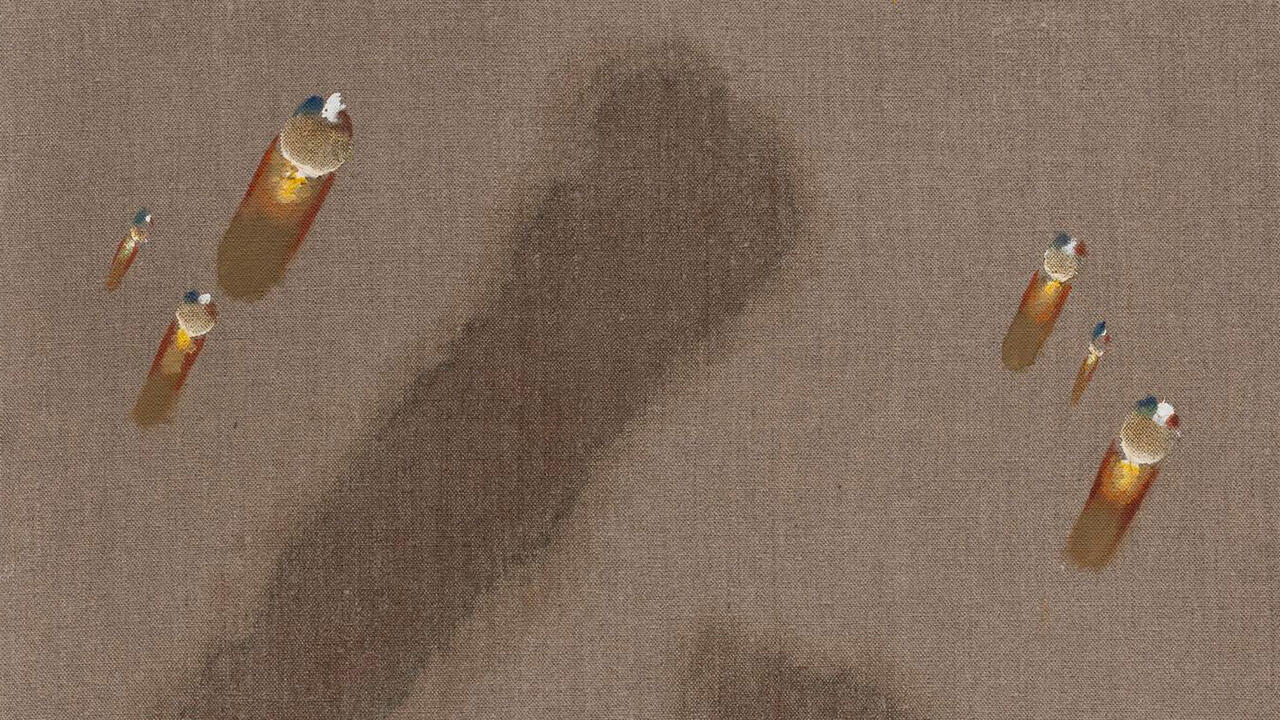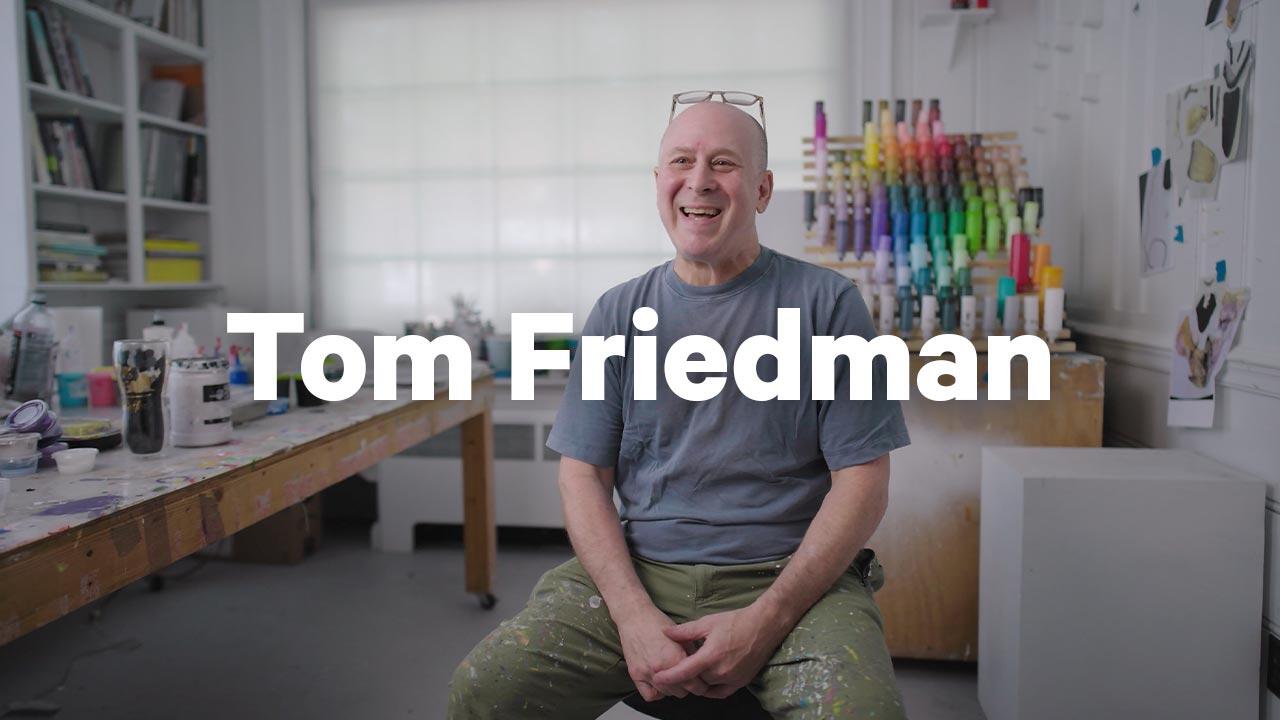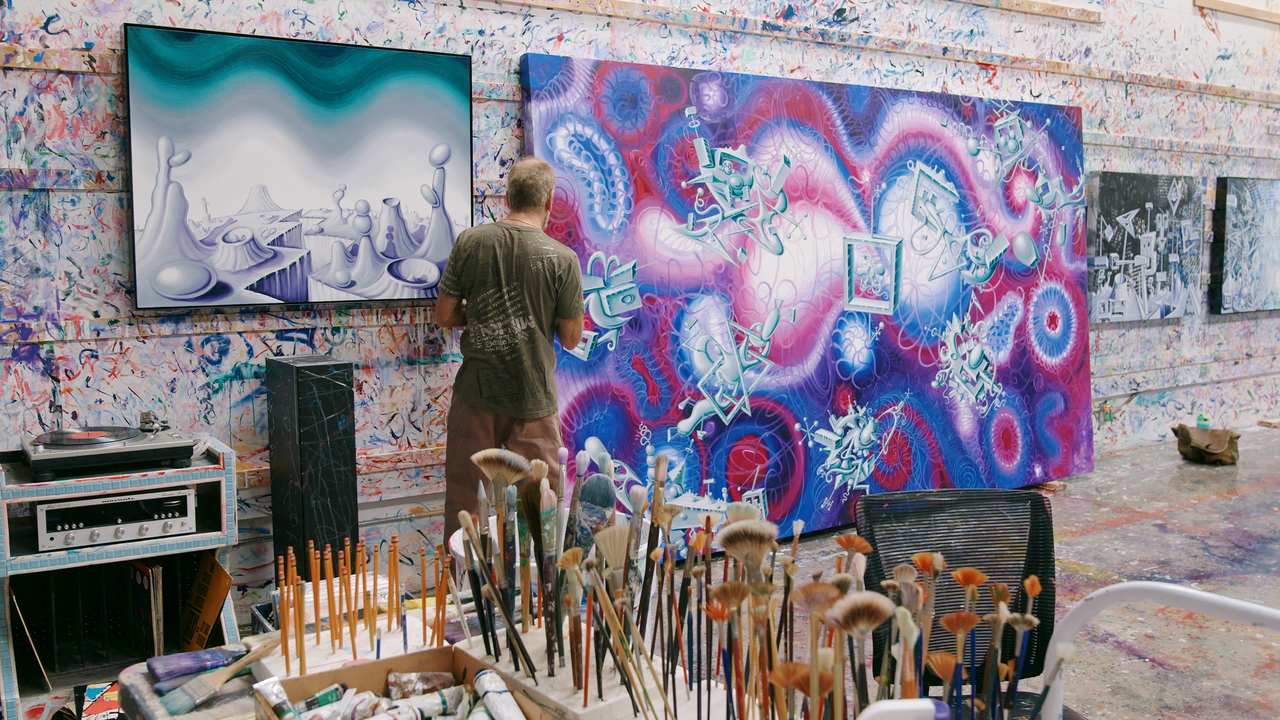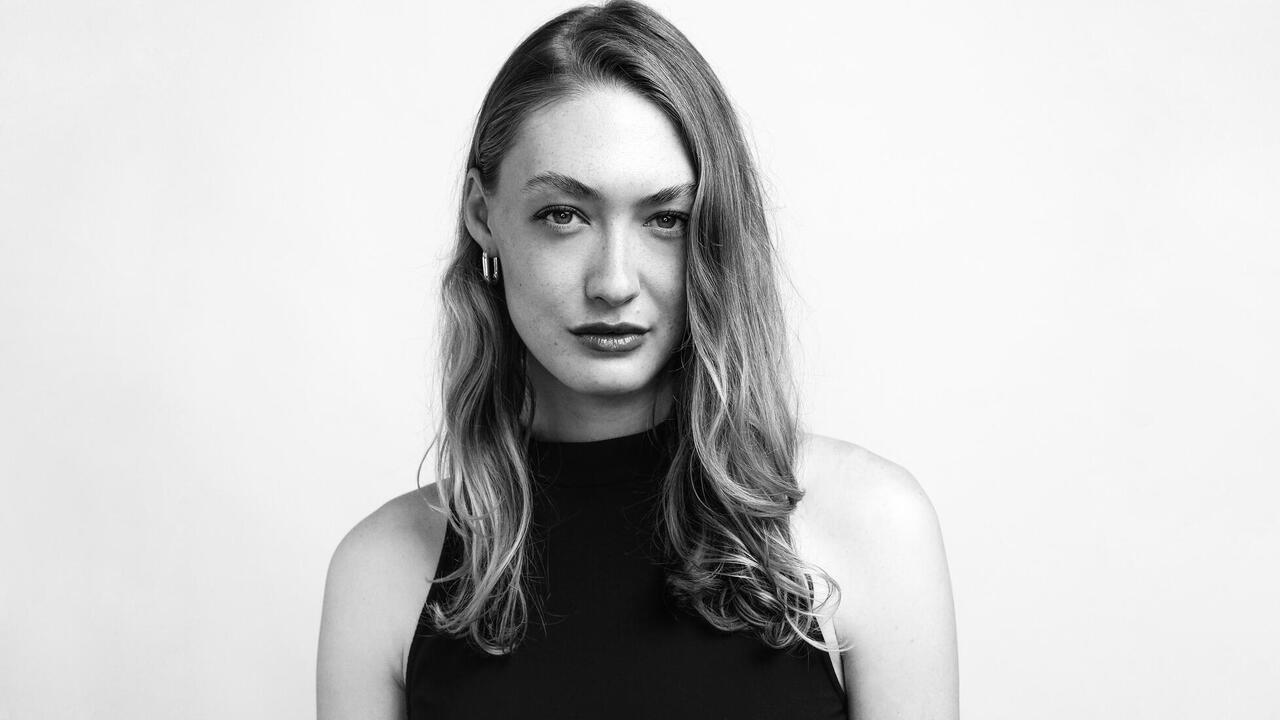How has art changed?
Some questions seem so obvious they are almost never asked. With the proliferation of museums, biennales and fairs, and the sheer amount of work now being made, shown, and sold, the art world has obviously changed substantially over the last 40 or so years. But what have been the most important shifts in art and the structures that surround it? frieze has asked 33 artists, collectors, critics, curators, educators and gallerists to respond
Some questions seem so obvious they are almost never asked. With the proliferation of museums, biennales and fairs, and the sheer amount of work now being made, shown, and sold, the art world has obviously changed substantially over the last 40 or so years. But what have been the most important shifts in art and the structures that surround it? frieze has asked 33 artists, collectors, critics, curators, educators and gallerists to respond
An artist who lives in Geneva and New York. He co-founded the artist group and eponymous gallery space ECART in the late 1960s, and more recently Villa Magica Records. His book About Nothing, has just been published by JRP/Ringier.
You know what they say: ‘plus ça change, plus c’est la même chose.’ Well 40 years is a mighty long time, and my memory is not reliable. 1965 might well be a jellyfish and 2005 some kind of scarab. Some things are quantifiable. In terms of statistics, we know what a small crowd it was then: a handful of venues, some events, a few writers, a set of publications, a small audience, a smaller group of collectors (but proportionally perhaps more than today) and a clique of artists. You needed about an hour to name them all. I am talking about what could be labelled the avant-garde, of course, whatever that covers or includes. This small group was also framed and fuelled by the economic and political shape of the times. The backbone of the postwar period was in place, offering the stimuli of a clear discourse in our capitalistic society, permitting a critical syntax that made immediate sense. The most established avant-gardists could afford to be champions in all fields, contesting the very support of their relative fame.
This state of affairs remained in place until the early 1980s, when affluent capitalism hit big. Suddenly the small world of the wealthy and comfortable became even wealthier, and statistics changed like they had never done before. Not that justice turned universal, but a privileged society had the means and need of consuming as never before. Culture turned into an available product, and this is what we bump up against today. This created a different concept of time. I am personally quite grateful to have been around long enough to now experience eternity limited to a couple of weeks. The significant changes are: more people, more venues, more publications, more artists, more words – and less duration. If only – and sorry for being such a retarded hippy – we could stop war, disease and poverty.
John Baldessari
An artist living in Santa Monica, CA.
I made a list of shifts in art in the last 40 years. Out of a list of 15, the one that jarringly stood out was the arrival of money and its consequences. What are they?
Good
1. Artists need it to have more time to do art.
2. Museums need it to do adventurous shows they otherwise might not be able to do.
Bad
1. Artists (especially young artists) can be tempted to do art they judge will sell, rather than what they would create if money were not in the equation.
2. Many galleries seem to lack a vision other than what will produce a sell-out show.
3. Museums need money and many have a blockbuster agenda – there is a merging of art and entertainment.
4. Artists watch the galleries and museums for what is popular – and saleable.
5. Collectors and galleries increasingly consume young artists that have not yet received their MFA.
6. Students decide to become artists because of quick money and social mobility.
7. Auction and art fair prices are increasingly an index of quality.
Iwona Blazwick
A critic, art historian, lecturer, broadcaster and Director of the Whitechapel Art Gallery, London.
The last four decades are both a legacy of the 1960s and a betrayal of their revolutionary potential. We can thank the Feminist and Civil Rights movements for making our art world massively more inclusive. The dematerialization of the object of art and its expansion into idea or phenomenon have made it possible for a text, an action or an environment to be understood as art and for Modernist realism to continue by other means. Early experiments with Super 8 and video laid the groundwork for the colonization of the art world’s time and space by the moving image, while the lens has attained equal status with the paintbrush. The entry of Structuralism, psychoanalysis and anthropology into theories of art has rocked the boat of aesthetics and evolved into an insistence on subjectivity and participation as integral to meaning. The spirit of collaboration and the co-option of empty property that was a hallmark of so many artists’ groups in the 1960s continues to live on generating a mobile but sustained network of laboratories for art.
It’s an expanding field that has also become increasingly professionalized, commercialized and spectacularized. The last 40 years have marked the rise and proliferation of curators, collectors and architects specializing in making museums into powerful corporate brands that are intended to provide mass entertainment, generate tourism or solve social problems. Art has moved from margin to centre, with all the losses and gains that this entails.
Saskia Bos
Has been Director of De Appel in Amsterdam for 20 years and was recently appointed Dean of Arts at The Cooper Union for the Advancement of Science and Arts, New York
As I have been working on a text about the reception of Marcel Broodthaers’ work over the last 40 years, your request to look back at that same period of time comes at an oddly appropriate moment. The year 1965, when Broodthaers had just started working as a visual artist, seems a happy time in retrospect: critical, but still unaware of things to come (the Vietnam War). Linguists are starting to publish their theories in France, but these are not yet applied to interpretations. The word ‘postmodernity’ has not been invented, hence the virtual absence of the curator as we see him/her today; clarifications are looked for in the words of artists, who, somewhat influenced by Duchamp, are playing hide and seek.
If Daniel Buren analyses the role of the curator in 1972 (Harald Szeeman,† 2005) as someone who creates a discourse between works, it is Lawrence Weiner who, exactly ten years later notifies us that Postmodernism has no such discourse, just COLOURFUL OBJECTS PUT SIDE BY SIDE TO FORM A ROW OF COLOURFUL OBJECTS. In the past 20 years we have seen a growing interest in the 1960s and 1970s, lately more towards artists’ attitudes and détournements than in material results. This is not nostalgia: awareness of the past contributes to imagining a future.
Gavin Brown
Emigrated to the USA in 1988. In 1994 he obtained a Green Card. He is considering his citizenship status.
The fundamental reasons that art is made, looked at and thought about have never changed, but no one knows what those reasons really are. But the structures that surround this process have ballooned, and like dust they will blow away in the first cold breeze. This industrialization of the ‘art world’ is a purely social and financial phenomenon. In fact, it has now grown to such bureaucratic dimensions that a new and unprecedented ugly hybrid has emerged – the local government/contemporary art/real estate exploitation Godzilla – coming to an overlooked and underpriced area near you – SOON.
If you were in Paris in the 1920s it was inspirational to see Cubism on the side of a camouflaged tank, but who would have thought that art was the perfect carrot to wave in front of Mr. Mayor? Contemporary art Disney-fication is dressing up the corpse of every grey rusty town that capitalist industry left for dead when it moved to Asia.
Like the American industrialization of food, this is alienating and makes us fat and lazy and greedy. It makes us very bored and very boring. Worst of all, everything starts to taste the same. It is important to eat fresh, local produce. We all want to grow the tastiest tomato, but we don’t have to sell it at Wal-Mart. There is nothing wrong with the local farmers’ market. And when the oil prices hit $100 a barrel, none of us will be leaving home anyway.
NO MORE FACTORY FARMS!
NO MORE TV DINNER BIENNIALS!
EAT MONEY SPEND FOOD!
LEAVE THE ART FAIR AND
NEVER COME BACK!
Luis Camnitzer
An artist living in New York who represented Uruguay in the 1988 Venice Biennale, and showed at Documenta XI. He is Professor Emeritus, State University of New York and Viewing Program Curator, The Drawing Center, New York.
1. The Conceptualist break: once Conceptualist strategies entered the art repertoire in full force, storytelling and hedonistic appreciation became secondary features, and art clearly became a field focused on problem solving. Analysing art-historical works is now one of the best solutions to interesting and well-formulated problems. Art assumed its responsibility as a tool in the quest and expansion of knowledge and the (yet unfulfilled) potential to transcend the fetishism of the object and the production of merchandise. The artist today faces the explicit responsibility of shaping culture.
2. The Basel Art Fair: it provided a sustainable forum where high quality and commerce could come together to feign a cultural event, or perhaps define a new, more accurate representation of art culture in the age of profiteering. The hypocrisy of salons and biennials was unmasked, and the first Art Basel marked the beginning of Postmodernism.
3. The first four Havana Biennials: as an answer to the centre’s stronghold on the art canon, it shifted the attention of the periphery onto itself. The effect was strong enough to refresh an artistically exhausted mainstream, but primarily it created a strong sense of independence and affirmation of identity among the artists of the Third World. As a by-product, these artists also started on the road to acceptance as non-handicapped players in the world’s art scene.
4. The erosion of geography for the benefit of infography: the Internet and the facilitation of travel allowed the formation of new communities bound by interests and causes rather than by location. While the physical neighbourhood will always remain a factor in the creation of dialects (artistic and other), the redefinition and primacy of connectedness is becoming a fundamental factor.
5. Computer literacy and technology: with the improvement of image resolution as a process independent from photographic rendering, the distance between imagination and product is in the process of being obliterated. The limitations of traditional media – painting, sculpture, drawing, etc. – inasmuch as they are clumsy and approximate tools of formalization, has made them recede to the level of crafts. Consequently styles and personal signatures have increasingly become trademarks rather than elements of cultural communication, and the elimination of the erosion of information between conception and execution is becoming the priority.
6. The acceptance of subversion as an ingredient of art-making: at least part of the art community has accepted that art has to challenge the status quo more radically than just saying that it should challenge the status quo. Thus, for those of us who believe in this, the definition of power and its attribution have evolved correctly. What has not evolved in tandem with all this is the location of power. In its general move towards fundamentalism, society is increasing control and diminishing funding for the arts. The solution, for the next 40 years, might be for artists to be less hung up about our label as artists and focus more on our duty to subvert.
Max Delany
Artistic Director, Monash University Museum of Art, Melbourne.
The passage from then to now: from an Antipodean perspective Minimalism turned up late (and misplaced), nevertheless anticipating a shift from fledgling to fly-blown institutions, white cubes to black boxes and beyond. Indigenous art and culture radically rewrote the lie of the land, history and the market. Global traffic and cities on the move redrew centre/periphery relations, mais, plus ça change plus c’est la même chose. Artists, all the while, have continued to make extraordinary things with (usually) limited means, producing problems and provocations, new sensations, vulnerabilities and intensities of feeling. I wonder how much our perception really has shifted within the digital realm. Certainly time has compressed, and space seems denser. In the end it’s probably capital which has performed the most intense, violent and spectacular acrobatics – a situation requiring artists, more than ever, to conceive new modes of critical diversion, play and corruption.
















